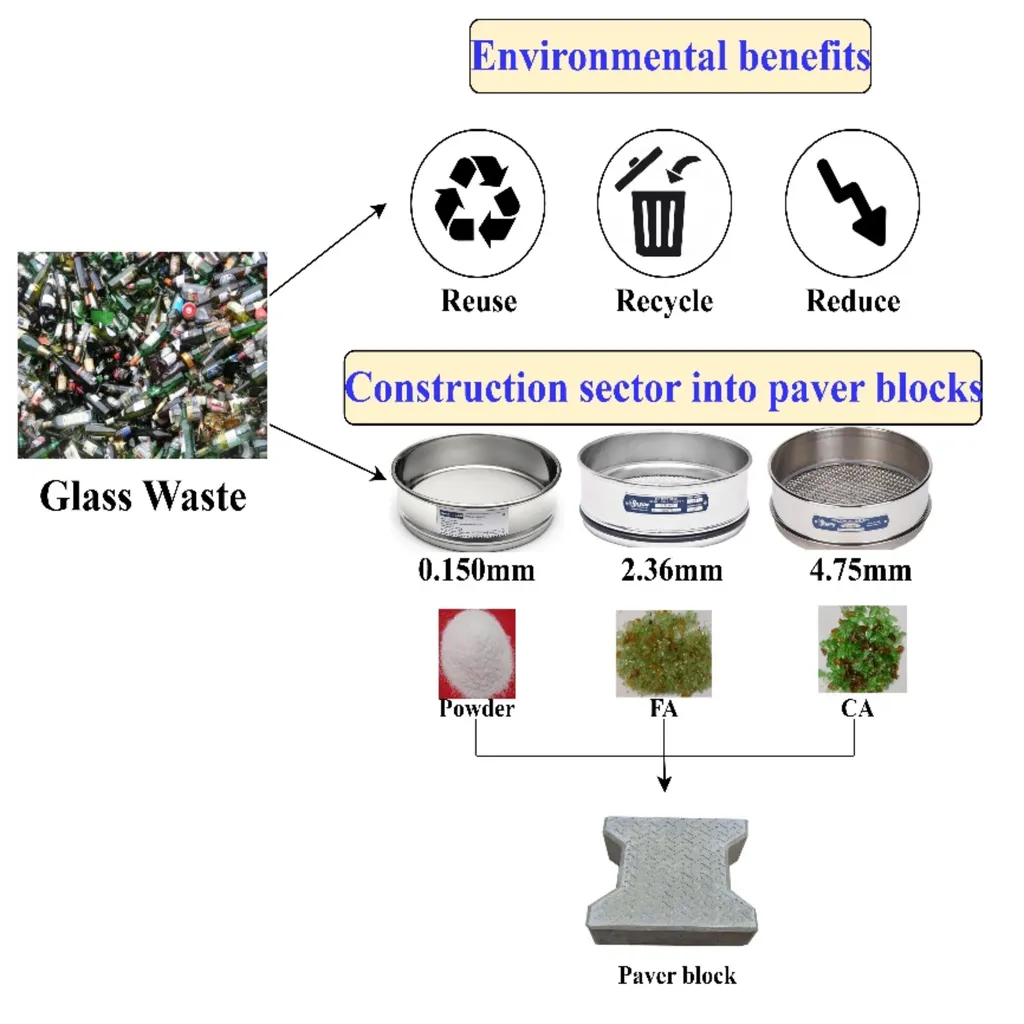In the quest for sustainable construction materials, a groundbreaking study led by Rohan Sawant from the Department of Civil Engineering at Dr. D. Y. Patil Institute of Technology Pimpri has unveiled a promising alternative to traditional paver blocks. Published in ‘Discover Applied Sciences’ (which translates to ‘Изучать Прикладные Науки’ in Russian), the research explores the use of geopolymer concrete and recycled plastic waste, offering a dual solution to environmental challenges in the construction and energy sectors.
Geopolymer concrete, a cement-free alternative, has gained traction for its reduced carbon footprint. Sawant’s study takes this a step further by incorporating recycled plastic waste as a partial substitute for fine aggregates in paver blocks. “We aimed to address two critical issues: the excessive use of natural resources in construction and the mounting problem of plastic waste,” Sawant explained. The team tested various replacement levels—5%, 10%, 15%, and 20%—to determine the optimal balance between sustainability and structural integrity.
The results were promising yet nuanced. While higher plastic content reduced the mechanical strength of the paver blocks, it significantly enhanced their sustainability profile. “The key was finding the sweet spot where we could maximize waste utilization without compromising the block’s performance,” Sawant noted. The study identified an optimal replacement percentage that maintained structural integrity while promoting effective plastic waste management.
For the energy sector, the implications are substantial. The construction of infrastructure, such as roads and pavements, consumes vast amounts of energy and resources. By adopting geopolymer paver blocks with recycled plastic, energy companies can reduce their carbon footprint and contribute to circular economy principles. “This approach not only reduces the demand for natural aggregates but also provides a viable solution for plastic waste, which is a growing concern globally,” Sawant added.
The research highlights the potential for geopolymer concrete to revolutionize the construction industry. As the demand for sustainable and energy-efficient materials grows, innovations like these pave the way for greener infrastructure solutions. Sawant’s findings offer a compelling case for the energy sector to invest in and adopt these eco-friendly alternatives, driving forward the transition to a more sustainable future.
In an era where environmental responsibility is paramount, this study serves as a beacon of hope, demonstrating that sustainability and performance can go hand in hand. As the construction and energy sectors continue to evolve, the integration of recycled materials and innovative concrete technologies will undoubtedly play a pivotal role in shaping a greener, more resilient world.

